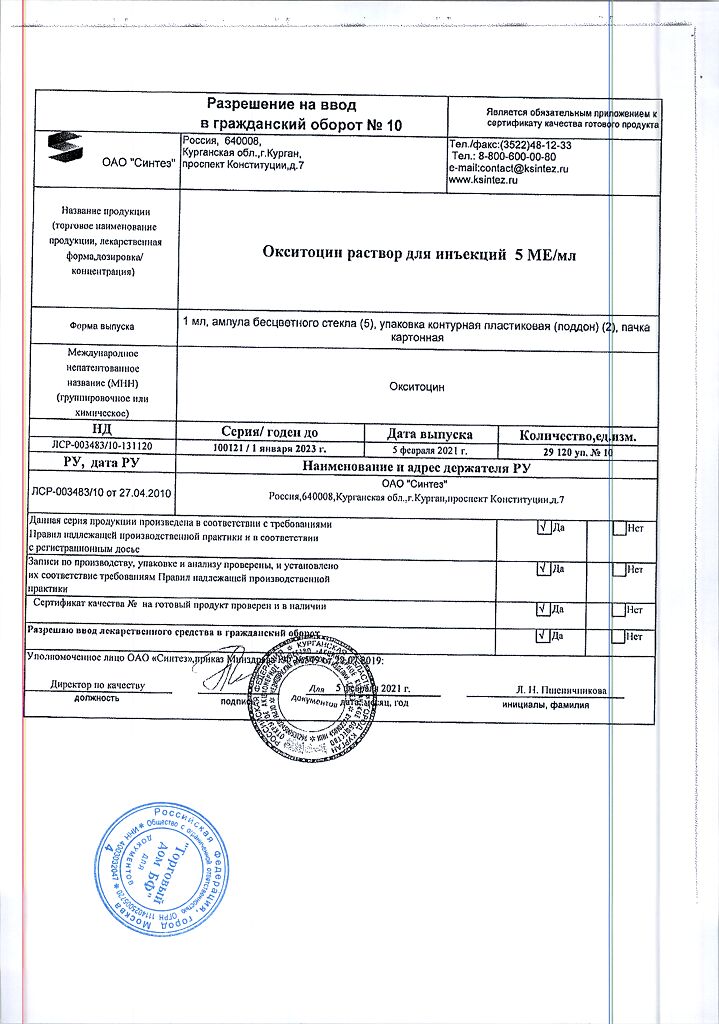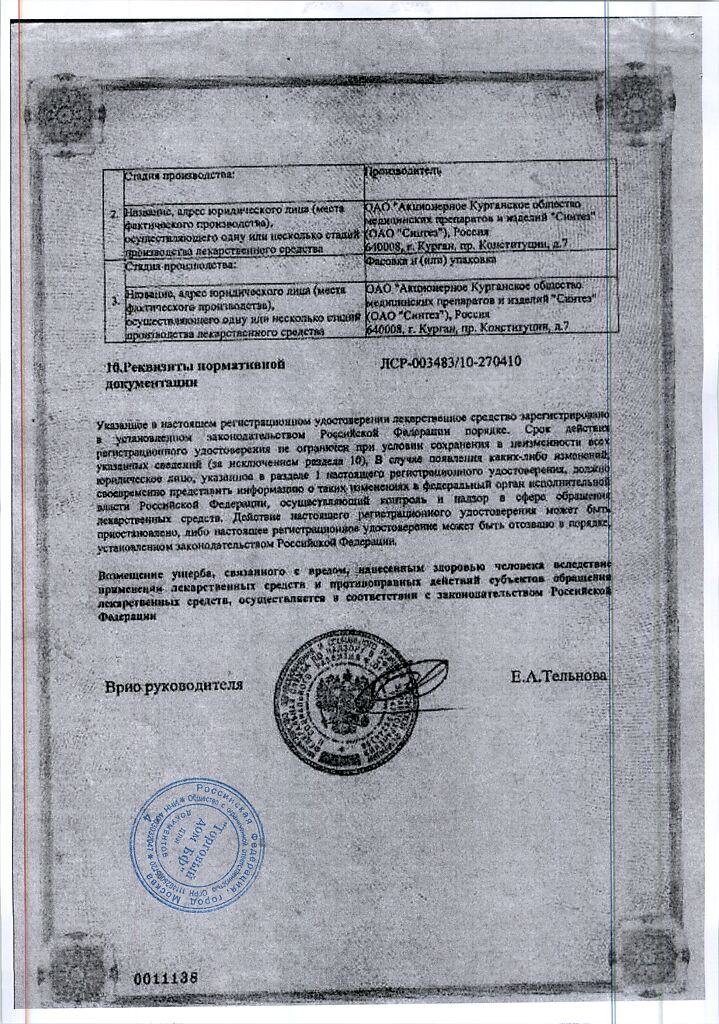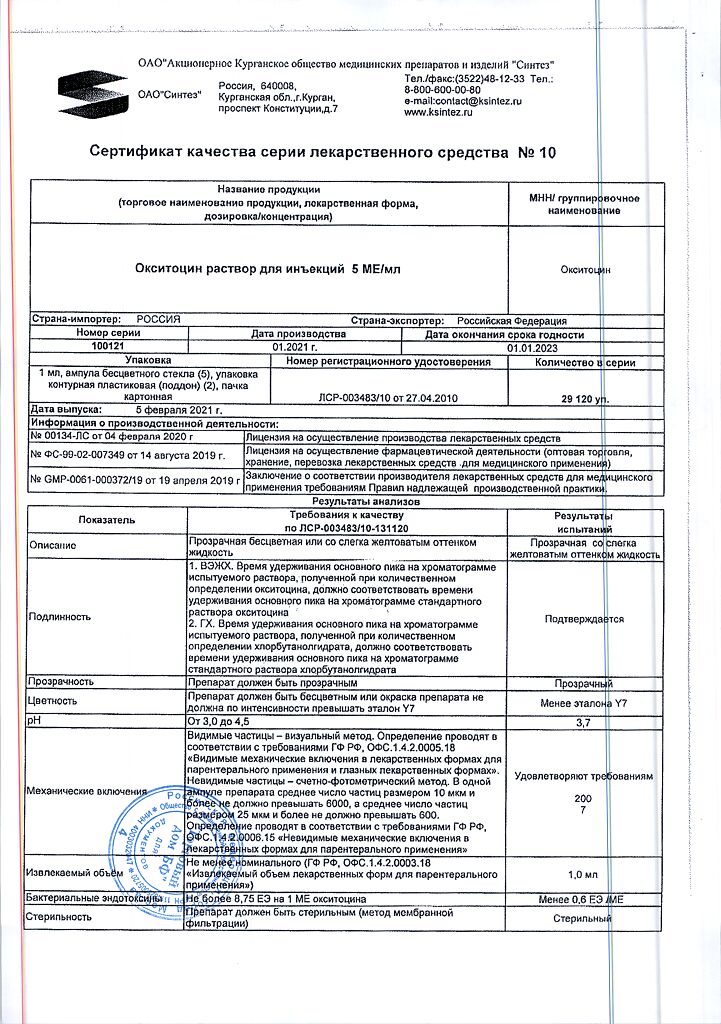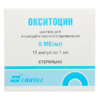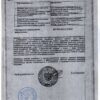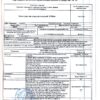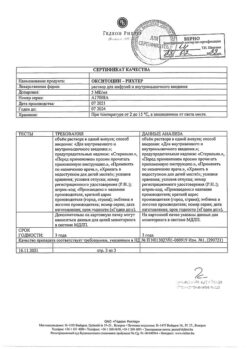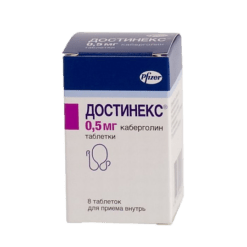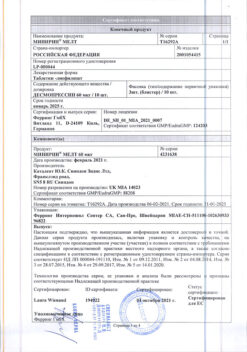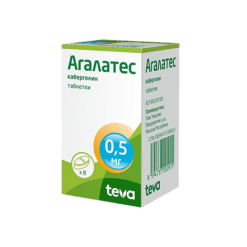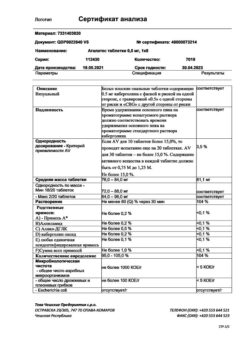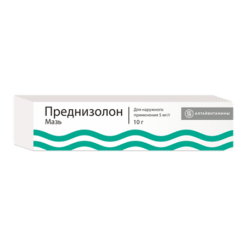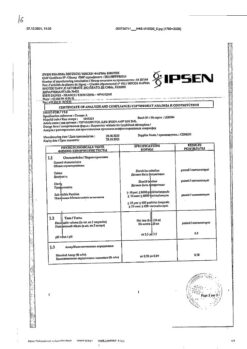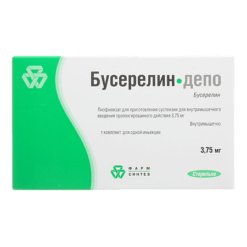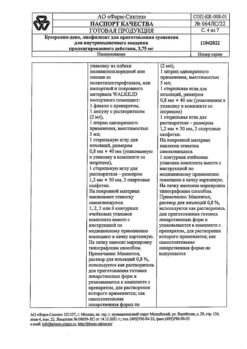No products in the cart.
Oxytocin, 5 me/ml 1 ml 10 pcs
€1.24 €1.13
Out of stock
(E-mail when Stock is available)
Description
A synthetic hormonal agent with pharmacological and clinical properties similar to the endogenous oxytocin of the posterior pituitary lobe. It interacts with oxytocin-specific receptors of uterine myometrium belonging to G-protein superfamily. The number of receptors and response to oxytocin increases as pregnancy progresses and reaches a maximum by the end of pregnancy.
Stimulates uterine labor activity by increasing the permeability of cell membranes for calcium and increasing its intracellular concentration, as well as by subsequently decreasing the resting potential of the membrane and increasing its excitability. Causes contractions similar to normal spontaneous labor by temporarily worsening the blood supply to the uterus. With an increase in the amplitude and duration of muscle contractions, the uterine cervix dilates and flattens. In appropriate quantities it is able to increase the contractility of the uterus from a moderate in strength and frequency, typical of spontaneous motor activity, to the level of prolonged tetanic contractions.
Causes contraction of myoepithelial cells adjacent to the alveoli of the mammary gland, improving breast milk secretion.
Acting on vascular smooth muscle, it causes vasodilation and increases blood flow in the kidneys, coronary vessels and brain vessels. Normally, blood pressure (BP) remains unchanged, but when large doses or concentrated oxytocin solution are injected intravenously, BP may decrease temporarily with the development of reflex tachycardia and a reflex increase in cardiac output. The initial decrease in BP is followed by a prolonged, even if small, increase.
Unlike vasopressin, oxytocin has minimal antidiuretic effect, but hyperhydration is possible when administering oxytocin with large amounts of electrolyte solutions and/or when administering them too quickly. It does not cause contraction of the bladder and intestinal muscles.
Indications
Indications
Oxytocin is intended to induce labor and stimulate labor.
– labor induction in late and close stages of pregnancy, if early delivery is necessary due to gestosis, Rh conflict, early or premature rupture of fetal membranes and discharge of amniotic fluid, as well as in post-term pregnancy (more than 42 weeks), intrauterine growth retardation, intrauterine fetal death.
– stimulation of labor in case of primary or secondary weakness of labor in the first and second stages of labor.
Oxytocin is also used for the prevention and treatment of hypotensive bleeding after childbirth and abortion, during cesarean section (after the birth of the child and separation of the placenta), to accelerate postpartum involution and as an additional therapy for incomplete or incomplete (inevitable) abortion.
Pharmacological effect
Pharmacological effect
A synthetic hormonal agent with pharmacological and clinical properties similar to endogenous oxytocin of the posterior pituitary gland. Interacts with oxytocin-specific receptors of the uterine myometrium, belonging to the G-protein superfamily. The number of receptors and the response to the action of oxytocin increase as pregnancy progresses and reach a maximum towards the end of it.
Stimulates labor activity of the uterus by increasing the permeability of cell membranes to calcium and increasing its intracellular concentration, also by subsequently reducing the resting potential of the membrane and increasing its excitability. Causes contractions similar to normal spontaneous labor, temporarily reducing the blood supply to the uterus. With an increase in the amplitude and duration of muscle contractions, the cervix of the uterus expands and smoothes. In appropriate quantities, it can enhance the contractility of the uterus from moderate in strength and frequency, characteristic of spontaneous motor activity, to the level of prolonged tetanic contractions.
Causes contraction of myoepithelial cells adjacent to the alveoli of the mammary gland, improving the secretion of breast milk.
By acting on vascular smooth muscle, it causes vasodilation and increases blood flow in the kidneys, coronary vessels and cerebral vessels. Typically, blood pressure (BP) remains unchanged, but with intravenous administration of large doses or a concentrated solution of oxytocin, blood pressure may temporarily decrease with the development of reflex tachycardia and a reflex increase in cardiac output. The initial decrease in blood pressure is followed by a prolonged, albeit small, increase.
Unlike vasopressin, oxytocin has minimal antidiuretic effect, but overhydration is possible when oxytocin is administered with large amounts of electrolyte solutions and/or when they are administered too quickly. Does not cause contraction of the muscles of the bladder and intestines.
Special instructions
Special instructions
Before starting to use oxytocin, the expected benefits of therapy should be weighed against the possibility, albeit small, of developing hypertension and uterine tetany.
Until the fetal head is inserted into the pelvic inlet, oxytocin cannot be used to stimulate labor.
Each patient receiving intravenous oxytocin should be in the hospital under constant supervision by experienced specialists experienced in using the drug and recognizing complications. If necessary, immediate assistance from a medical specialist must be provided. To avoid complications during the use of the drug, uterine contractions, cardiac activity of the mother and fetus, and blood pressure of the mother should be constantly monitored. If there are signs of uterine hyperactivity, oxytocin administration should be stopped immediately, as a result of which uterine contractions caused by the drug usually subside soon.
When used adequately, oxytocin causes uterine contractions similar to spontaneous labor. Excessive stimulation of the uterus if the drug is used incorrectly is dangerous for both the mother and the fetus. Even with adequate use of the drug and appropriate monitoring, hypertensive uterine contractions occur with increased sensitivity of the uterus to oxytocin.
The risk of developing afibrinogenemia and increased blood loss should be taken into account.
There are cases of death of a woman in labor as a result of hypersensitivity reactions, subarachnoid hemorrhage, uterine rupture and fetal death for various reasons associated with parenteral administration of the drug for induction of labor and stimulation of labor in the first and second stages of labor.
As a result of the antidiuretic effect of oxytocin, overhydration may develop, especially when using a constant infusion of oxytocin and ingesting fluids.
The drug can be diluted in solutions of sodium lactate, sodium chlorate and glucose. The prepared solution should be used within the first 8 hours after its preparation. Compatibility studies were carried out with 500 ml infusions.
The effect of the drug on the ability to drive a car and operate machinery, the operation of which is associated with an increased risk of injury
Oxytocin does not affect the ability to drive a car or operate machinery, the operation of which is associated with an increased risk of injury.
Active ingredient
Active ingredient
Oxytocin
Composition
Composition
1 ml
oxytocin
5 IU
Excipients:
glacial acetic acid,
chlorobutanol hemihydrate,
ethanol 96%,
water d/i.
Contraindications
Contraindications
– the presence of contraindications for vaginal birth (for example, presentation or prolapse of the umbilical cord, complete or partial placenta previa, narrow pelvis (discrepancy between the sizes of the fetal head and the pelvis of the woman in labor), transverse or oblique position of the fetus, preventing spontaneous delivery, emergency situations requiring surgical intervention caused by the condition of the woman in labor or the fetus, states of fetal distress long before the terminal stages of pregnancy, long-term use for uterine inertia, severe gestosis (high blood pressure, impaired renal function), uterine hypertonicity (not occurring during childbirth), sepsis, heart disease, arterial hypertension, impaired renal function, excessive distension of the uterus, fetal compression);
– increased sensitivity to oxytocin.
Side Effects
Side Effects
In women giving birth
From the reproductive system: with large doses or hypersensitivity – uterine hypertension, spasm, tetany, uterine rupture; increased bleeding in the postpartum period as a result of oxytocin-induced thrombocytopenia, afibrinogenemia and hypoprothrombinemia, sometimes hemorrhage in the pelvic organs. With careful medical monitoring during labor, the risk of postpartum bleeding is reduced.
From the cardiovascular system: with large doses – arrhythmia, ventricular extrasystole, severe hypertension (in the case of using vasopressor drugs), hypotension (when used simultaneously with the anesthetic cyclopropane), reflex tachycardia, shock, with too rapid administration – bradycardia, subarachnoid hemorrhage.
From the digestive system: nausea, vomiting.
From the side of water-electrolyte metabolism: severe overhydration with prolonged intravenous administration (usually at a rate of 40-50 mU/min) with large amounts of fluid (antidiuretic effect of oxytocin); with a 24-hour slow infusion of oxytocin, overhydration may be accompanied by convulsions and coma; rarely – death.
From the immune system: anaphylaxis and other allergic reactions, with too rapid administration, bronchospasm; rarely – death.
In the fetus or newborn
As a consequence of the administration of oxytocin to the mother – a low Apgar score at the 1st and 5th minute, hyperbilirubinemia in newborns, with too rapid administration – a decrease in the level of fibrinogen in the blood, hemorrhage in the retina; as a consequence of the contractile activity of the uterus – sinus bradycardia, tachycardia, ventricular extrasystole and other arrhythmias, changes in the central nervous system, fetal death as a result of asphyxia.
Interaction
Interaction
When oxytocin is administered 3-4 hours after the use of vasoconstrictors together with caudal anesthesia, severe arterial hypertension is possible.
During anesthesia with cyclopropane and halothane, the cardiovascular effect of oxytocin may change with the unexpected development of arterial hypotension, sinus bradycardia and rhythm from the atrioventricular node in a woman in labor during anesthesia.
Overdose
Overdose
Symptoms depend mainly on the degree of uterine hyperactivity, regardless of the presence of hypersensitivity to the drug. Hyperstimulation with hypertonic and tetanic contractions or with basal tone ≥15-20 mm aq. Art. between two contractions leads to incoordination of labor, rupture of the body or cervix, vagina, bleeding in the postpartum period, uteroplacental insufficiency, fetal bradycardia, hypoxia, hypercapnia, compression, birth injuries or death. Overhydration with convulsions as a result of the antidiuretic effect of oxytocin is a serious complication and develops with prolonged administration of large doses (40-50 ml/min).
Treatment of overhydration: withdrawal of oxytocin, restriction of fluid intake, use of diuretics to increase diuresis, intravenous administration of hypertonic saline, correction of electrolyte imbalances, control of seizures with appropriate doses of barbiturates, and careful care of the comatose patient.
Storage conditions
Storage conditions
Store at a temperature of 2-15 °C, protected from light, out of the reach of children.
Shelf life
Shelf life
3 years.
Do not use the drug after the expiration date indicated on the package.
Manufacturer
Manufacturer
Sintez, Russia
Additional information
| Shelf life | 3 years. Do not use the drug after the expiration date stated on the package. |
|---|---|
| Conditions of storage | Store at 2-15 ° C, protected from light, out of the reach of children. |
| Manufacturer | Sintez OAO, Russia |
| Medication form | solution for injection |
| Brand | Sintez OAO |
Other forms…
Related products
Buy Oxytocin, 5 me/ml 1 ml 10 pcs with delivery to USA, UK, Europe and over 120 other countries.


